Species
The Potential Measures carried out on each specific habitat will benefit a range of Lancashire's most important species. With the help of specialists, 534 of these species have been prioritised and these measures should help aid their survival/recovery. A list of the 534 species can be found in Appendix Ten of the Evidence and Technical Information document.
24 species have also been identified as 'Lancashire LNRS Target Species'. These are some of Lancashire's most scarce, declining or most important species requiring specific actions beyond the more general habitat creation and enhancement measures. A specific priority has been assigned to these species.
SR1: Enable the recovery of scarce and declining species and other species considered to be important to Lancashire, which require bespoke species recovery measures.
A summary of the 24 Lancashire LNRS target species and why they were selected is provided here. For detailed information on the measures for the 24 target species, refer to Table 19.
Red squirrel
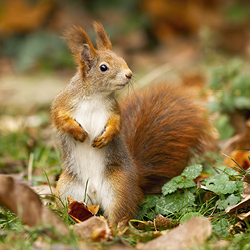 (Sciurus vulgaris)
(Sciurus vulgaris)
Taxon: Mammal
Broad habitat: Woodland
This iconic species is currently found in isolated areas which cannot support themselves without improving and connecting suitable areas for them and at the same time controlling grey squirrels which are the main threat to red squirrels and the reason they have become endangered.
Enabling their recovery in Lancashire also bridges the gap between existing populations in Cumbria and Liverpool City Region and potentially into Yorkshire as well.
Atlantic salmon
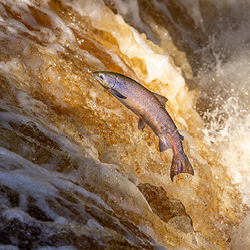 (Salmo salar)
(Salmo salar)
Taxon: Fish
Broad habitat: Aquatic & Wetland / Coastal & Estuarine
Icons of British rivers, but population numbers have rapidly declined. Complex needs for each stage of their life cycle are being impacted across the board due to pollution, barriers to spawning grounds, extremes of flooding and drought associated with climate change and the need to return to complex, natural re-wiggled rivers to support those complex needs.
European Smelt
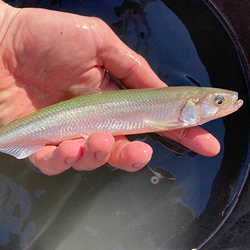 (Osmerus eperlanus photo © Thomas Myerscough, Wyre Rivers Trust)
(Osmerus eperlanus photo © Thomas Myerscough, Wyre Rivers Trust)
Taxon: Fish
Broad habitat: Aquatic & Wetland / Coastal & Estuarine
Smelt have undergone massive declines in Lancashire and across the North-West.
They are incredibly sensitive to water quality decline, as well as water extremes caused by climate change. They also need multiple improvements throughout the course of their rivers to allow migration and to restore their breeding grounds.
Hen harrier
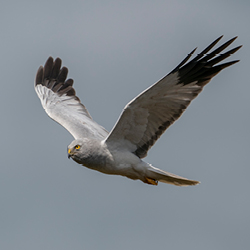 (Circus cyaneus photo © Lee O’Dwyer)
(Circus cyaneus photo © Lee O’Dwyer)
Taxon: Birds
Broad habitat: Peatland / complex
A flagship species for other upland ground-nesting raptors such as merlin and short-eared owl.
The Forest of Bowland in Lancashire is one of England's most important strongholds for breeding hen harriers, which is internationally recognised as a Special Protection Area (SPA) for this species. Persecution at a national level is the greatest threat to this iconic species.
Black-tailed godwit
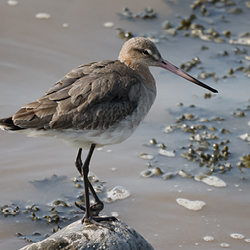 (Limosa limosa photo © Paul Ellis)
(Limosa limosa photo © Paul Ellis)
Taxon: Birds
Broad habitat: Aquatic & Wetland / Coastal & Estuarine
Only three sites remain in the whole of the UK for breeding populations of black-tailed godwits and the freshwater on the coastal floodplain grazing marsh at Newton/Freckleton Ribble Estuary is one of them, where they are an internationally recognised species of the Special Protection Area (SPA).
But numbers of breeding pairs is dangerously low (1-3) and urgent action is required to ensure this breeding population isn’t lost.
Black-headed gull
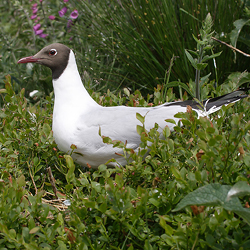 (Chroicocephalus ridibundus photo © John Power)
(Chroicocephalus ridibundus photo © John Power)
Taxon: Birds
Broad habitat: Complex (e.g., marine and intertidal, farmland, wetland, grassland)
Lancashire is one of the most important counties in the UK for this species, and the West Pennine Moors is nationally recognised as a Site of Special Scientific Interest (SSSI) for this species.
They been heavily impacted by avian flu, as well as climate related changes such as flooding of nest sites during high rainfall, and predation during drought where water levels fall allowing predators to cross over to island nesting sites.
More habitat suitable for nesting and protection from predators is desperately needed.
Lesser black-backed gull
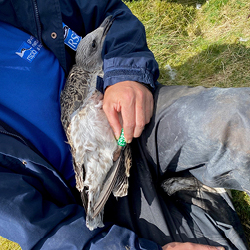 (Larus fuscus photo © Philip Miller RSPB, juvenile being ringed.
(Larus fuscus photo © Philip Miller RSPB, juvenile being ringed.
Taxon: Birds
Broad habitat: Complex (e.g., urban and suburban, marine and intertidal, farmland, wetland, grassland and moorland)
As natural food sources at sea appear to dwindle more pressure on modern feed sources in fields, urban areas and at landfill sites occur.
With only two main natural nesting colonies in Lancashire, and with one failing fast due to predation on eggs and chicks, there is increasing pressures associated with the other.
There is a huge need to re-establish the original natural breeding areas and identify new potential breeding areas to alleviate the pressures of the existing colonies.
Duke of Burgundy
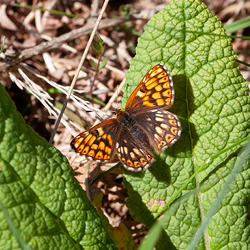 (Hamearis lucina photo © Tom Dunbar)
(Hamearis lucina photo © Tom Dunbar)
Taxon: Butterflies
Broad habitat: Rocky habitats/ complex
This butterfly is in serious decline and is a northern England regional conservation priority species. It needs a delicate balance of habitats to survive and that requires specific management. This species is therefore likely to need re-introduction to support its recovery.
The core population area is now limited to Gait Barrows.
High brown fritillary
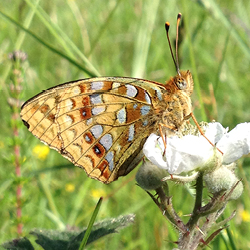 (Fabriciana adippe photo © Martin Wain, Butterfly Conservation Trust)
(Fabriciana adippe photo © Martin Wain, Butterfly Conservation Trust)
Taxon: Butterflies
Broad habitat: Rocky habitats/ complex
Once common and widespread this butterfly is now restricted to a scattering of sites in England and Wales including in the Morecambe Bay area. Groups here have declined sharply and by 2023 all except a small population at Gait Barrow had disappeared.
It is a northern England regional conservation priority species due to a decline of over 90% since the 1970s.
Pearl-bordered fritillary
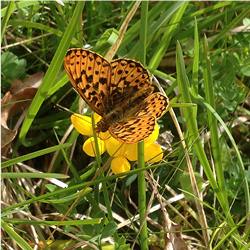 (Boloria Euphrosyne photo © Martin Wain, Butterfly Conservation Trust)
(Boloria Euphrosyne photo © Martin Wain, Butterfly Conservation Trust)
Taxon: Butterflies
Broad habitat: Rocky habitats/ complex
In England and Wales this butterfly is only found in scattered and isolated colonies and is mainly absent in the north. However, they but area present in the limestone areas of Morecambe Bay although confined to only a handful of sites and there is currently little suitable habitat to which it might spread.
This species is also a northern England regional conservation priority species.
Large heath
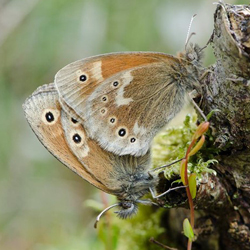 (Coenonympha tullia photo © Tim Melling)
(Coenonympha tullia photo © Tim Melling)
Taxon: Butterflies
Broad habitat: Peatland
This species is unique as it is more or less confined to boggy peatland areas in the uplands and the lowlands.
As peatland restoration takes place this species is likely to need reintroduction into newly restored areas to support its recovery.
Large heath are declining across northern England, and Lancashire is thought to be the most northern of the lowland sites and therefore essential to ongoing conservation work.
This species is also a northern England regional conservation priority species.
Belted beauty
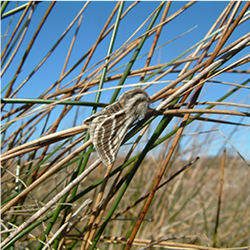 (Lycia zonaria photo © Stephen Palmer)
(Lycia zonaria photo © Stephen Palmer)
Taxon: Moths
Broad habitat: Coastal & estuarine
The Lancashire colony is the last remaining colony of Belted Beauty in England and Wales, and the survival of this species stands on a knife edge.
Its national rarity mixed with an ability to survive on this atypical saltmarsh habitat against all odds and the unusual nature of the moths themselves, make this an important and iconic species in Lancashire as well as throughout the British Isles.
Least minor
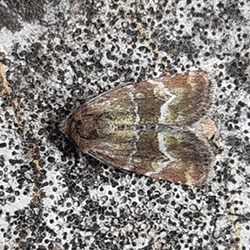 (Photedes captiuncula photo © of Justine Patton)
(Photedes captiuncula photo © of Justine Patton)
Taxon: Moths
Broad habitat: Rocky habitats/ complex
Nationally rare and restricted to very localised areas in the north of England Least minor is at risk of being added to the Endangered list.
The Morecambe Bay limestone area is a stronghold for this pretty day moth which flies in sunny weather, and highlights the urgent need to properly understand and look after these microhabitats which it lives in.
Wall mason bee
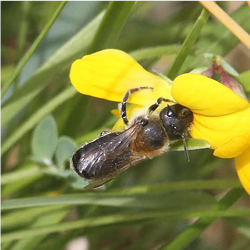 (Osmia parietina photo © Mike Foley)
(Osmia parietina photo © Mike Foley)
Taxon: Hymenoptera
Broad habitat: Grassland/ Woodland
Both a flagship and umbrella species (a species whereby protecting these indirectly protects many other species as well), wall mason bees have a very limited range nationally and as such are a vulnerable species.
With a stronghold in Morecambe Bay this highlights the urgent need to properly understand and look after these solitary bees.
Tormentil mining-bee
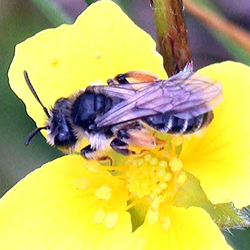 (Andrena tarsata photo © Allen Holmes)
(Andrena tarsata photo © Allen Holmes)
Taxon: Hymenoptera
Broad habitat: Grassland
Another umbrella species, as its name suggests, this little bee is entirely reliant on one flower, tormentil as a pollen source.
This species has dramatically decline across Lancashire and the rest of England through habitat loss and their populations are isolated making it very vulnerable.
Bilberry bumblebee
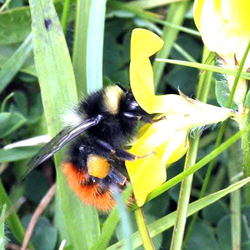 (Bombus monticola photo © Allen Holmes)
(Bombus monticola photo © Allen Holmes)
Taxon: Hymenoptera
Broad habitat: Peatland (heathland)
Lancashire is a key location for this flagship species, which is particularly vulnerable to the impacts of climate change.
They are in serious decline both nationally, but evidence suggests locally as well, with local extinctions and substantial declines in previous strongholds of the county.
Red wood ant
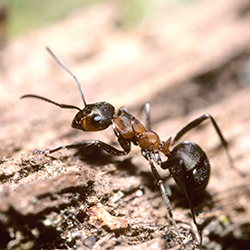 (Formica rufa photo © Andy Beech)
(Formica rufa photo © Andy Beech)
Taxon: Hymenoptera
Broad habitat: Woodland
The most northern populations of red wood ant are found in the open woodlands around Morecambe Bay but it is disappearing from much of the North, Midlands and East of the Country.
They are the UK’s largest ant species and can live in large, complex social groups and can spray formic acid to defend themselves!
Yellow Star-of-Bethlehem
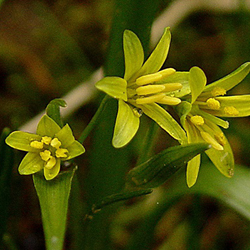 (Gagea lutea photo © David Earl and the late John Somerville)
(Gagea lutea photo © David Earl and the late John Somerville)
Taxon: Plants
Broad habitat: Woodland (riverside)
This delicate spring flower, is very rare in Lancashire, found growing at only two known sites in recent times which makes it extremely vulnerable.
It is mostly found along wooded riverbanks where flooding and erosion is resulting in habitat loss. Propagation (producing a new plant from a parent plant) in potential new locations particularly along the River Hodder and nearby rivers could be highly successful and help aid the recovery of this species.
Northern bedstraw
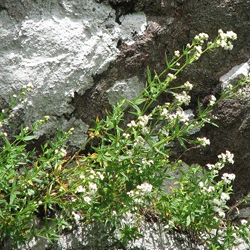 (Galium boreale photo © Peter Gateley)
(Galium boreale photo © Peter Gateley)
Taxon: Plants
Broad habitat: Rocky habitats
Almost entirely only found in the north of England and Scotland, with only one known location left in Lancashire.
The pretty little white flowers attract a lot of pollinator insects like little bees and flies.
As with all these plant species, propagation will be required to ensure its survival as well as finding appropriate sites to plant and arranging suitable management particularly at the existing site and in the Lune valley where it used to be found.
Wood crane's-bill
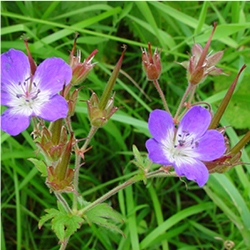 (Geranium sylvaticum Photo © David Earl)
(Geranium sylvaticum Photo © David Earl)
Taxon: Plants
Broad habitat: Grassland
This woodland edge and unimproved (untouched by fertilisers) grassland species is scarce in Lancashire and undergoing widespread decline in England and is therefore a priority for conservation.
It provides nectar and pollen for bees and the many other types of pollinating insects.
The common name of 'crane's-bill' refers to the long, beak-like shape of the seeds (as can been seen in the photo).
Propagation will be necessary and is known to have been successful, so local species recovery is achievable.
Melancholy thistle
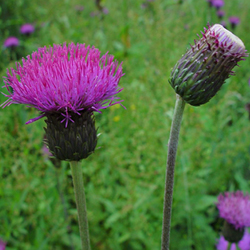 (Cirsium heterophyllum photo © David Earl)
(Cirsium heterophyllum photo © David Earl)
Taxon: Plants
Broad habitat: Grassland
Once widespread across the north of England this species is now classed as Near Threatened (at risk of becoming threatened nationally) and has only managed to hang on at a few sites in Lancashire.
They are called the melancholy thistle because they droop when they first bloom, and because they use to be used as a cure for melancholia (depression).
They are very attractive to bees and butterflies and will attract seed-eating birds like goldfinch later in the year.
Propagation to suitable sites like lane verges and semi-improved meadows will be necessary.
Lady's-slipper-orchid
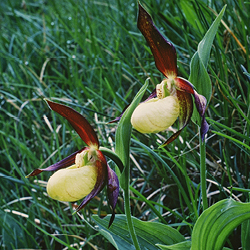 (Cypripedium calceolus photo © Peter Wakely, Natural England)
(Cypripedium calceolus photo © Peter Wakely, Natural England)
Taxon: Plants
Broad habitat: Rocky habitats
This beautiful orchid is critically endangered and one of the rarest plants in the UK. Remaining plants are isolated and therefore extremely vulnerable, and sadly at risk of theft.
Arnside and Silverdale National Landscape in Lancashire is part of a conservation project for this species, to decide where and when the next generation of Lady's-slipper orchid will be planted, in locations they will hopefully thrive without too much help. Future management of these sites so that the plants are more resilient in the face of our increasingly unpredictable weather patterns will be key.
Petty whin
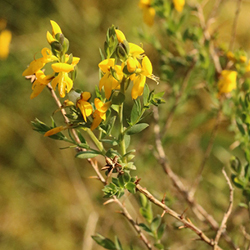 (Genista anglica photo © Joshua Styles)
(Genista anglica photo © Joshua Styles)
Taxon: Plants
Broad habitat: Peatland (heathland)
This pretty heath and moorland species is also very rare in Lancashire having undergone serious decline particularly in NW England leaving isolated populations that are extremely vulnerable.
Conservation at a site is underway and could be extended to other existing sites within Lancashire to improve population sizes, genetic diversity and habitats to promote germination and persistence and hope that these efforts will result in more robust, healthy populations of the species in NW England.
Dwarf cornel
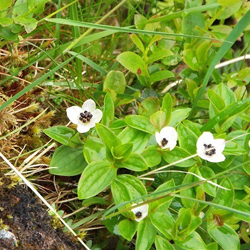 (Cornus suecica photo © Peter Gateley)
(Cornus suecica photo © Peter Gateley)
Taxon: Plants
Broad habitat: Peatland
Population isolation through the drying out of moorland and fires has resulted in this species becoming extinct within Lancashire on several occasions!
This pretty species is in cultivation, being propagated and reestablished at two secret locations in the West Pennine Moors SSSI!